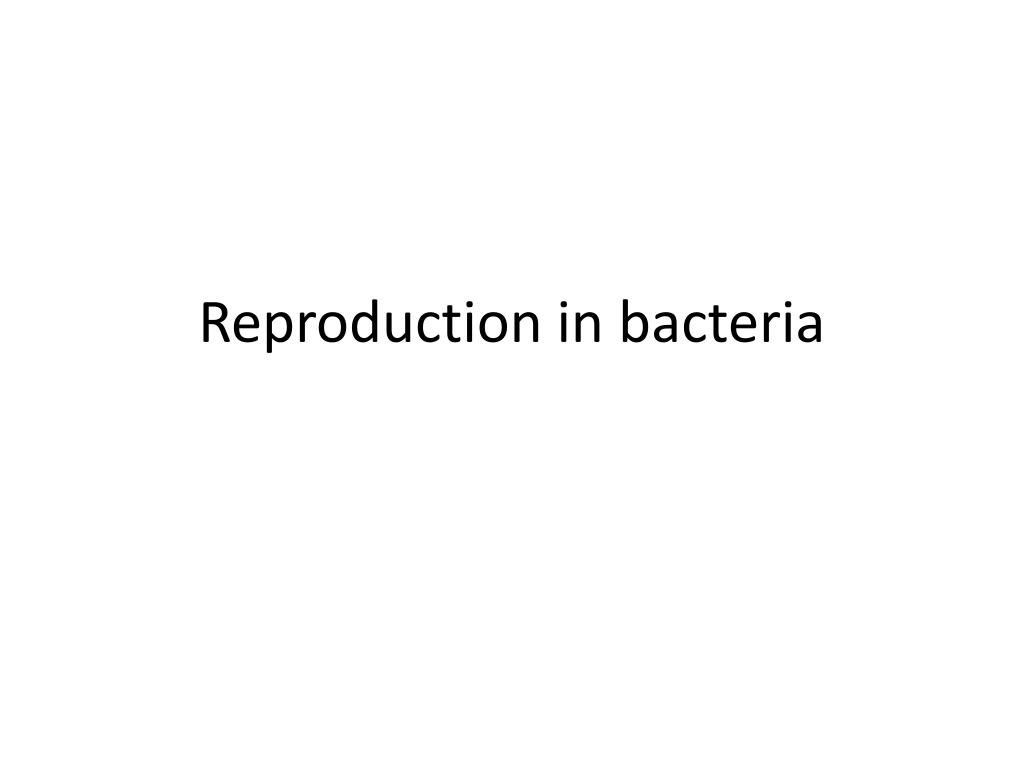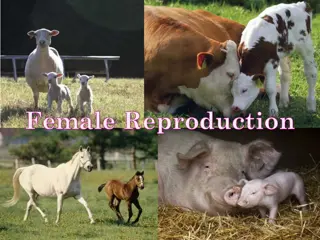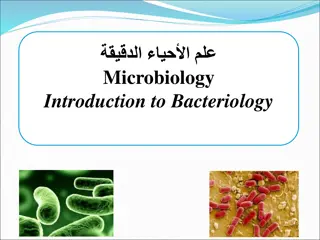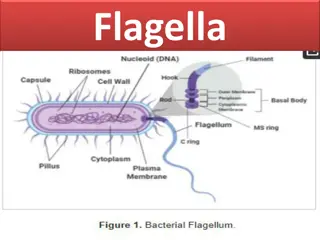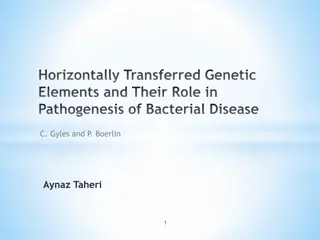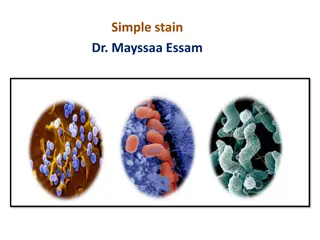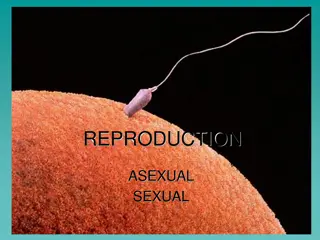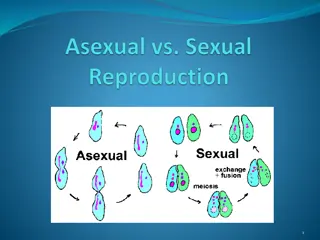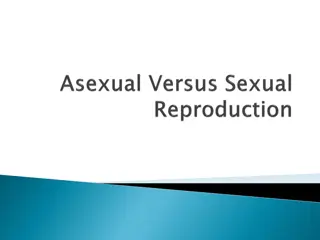Understanding Bacterial Reproduction: A Comprehensive Overview
Explore the various types of reproduction in bacteria, including asexual reproduction through binary fission, as well as the intricate process of endospore formation for survival in harsh conditions. Discover how bacterial cells exchange genetic material in sexual reproduction through conjugation, transformation, and transduction.
Download Presentation

Please find below an Image/Link to download the presentation.
The content on the website is provided AS IS for your information and personal use only. It may not be sold, licensed, or shared on other websites without obtaining consent from the author. Download presentation by click this link. If you encounter any issues during the download, it is possible that the publisher has removed the file from their server.
E N D
Presentation Transcript
Types of Reproduction in bacteria Asexual Reproduction A type of reproduction in which only one bacterial cell will produce nascent progeny cells. Mitosis is involved. Binary fission: Single parent cell doubles its DNA, then divides into two cells. Usually occurs in bacteria. A cell just needs to grow to twice its starting size and then split in two. A bacterium must divide at the right time, in the right place, and must provide each offspring with a complete copy of its essential genetic.
Endospore formation in bacteria Microorganisms sense and adapt to changes in their environment This complex developmental process is often initiated in response to nutrient deprivation. It allows the bacterium to produce a dormant and highly resistant cell to preserve the cell's genetic material in times of extreme stress. Endospores can survive environmental assaults that would normally kill the bacterium
These stresses include high temperature, high UV irradiation, desiccation, chemical damage and enzymatic destruction The extraordinary resistance properties of endospores make them of particular importance because they are not readily killed by many antimicrobial treatments. A variety of different microorganisms form "spores" or "cysts", but the endospores of low Gram-positive bacteria are by far the most resistant to harsh conditions.
Sexual Reproduction in Bacteria Basically in bacteria there is no differentiation of sexes only strains are considered different. In sexual reproduction of bacteria two cells/ entities are involved between which the genomic exchange takes place. Conjugation Transformation Transduction
Conjugation Transfer of genetic material between bacterial cells by direct cell-to-cell contact or by a bridge-like connection between two cells. This takes place through a pilus. The donor (f+) cell provides a conjugative or mobilizable genetic element that is most often a plasmid to the recipient(f-) bacterial cell.
Transformation Bacterial transformation is a process of horizontal gene transfer by which some bacteria take up foreign genetic material (naked DNA) from the environment. It was first reported in Streptococcus pneumoniae by Griffith in 1928. DNA as the transforming principle was demonstrated by Avery et al in 1944.
The transformation does not require a living donor cell but only requires the presence of persistent DNA in the environment. The prerequisite for bacteria transformation is its ability to take up free, extracellular genetic material. Such bacteria are termed as competent cells. process of gene transfer by to undergo
The factors that regulate natural competence vary between various genera. Once the transforming factor cytoplasm, it may be degraded by nucleases if it is different from the bacterial DNA. If the exogenous genetic material is similar to bacterial DNA, it may integrate into the chromosome. Sometimes genetic material may co-exist as a plasmid with chromosomal DNA. (DNA) enters the the exogenous
Transduction The process by which foreign DNA is introduced into a bacterial cell by a virus or viral vector. An example is the viral transfer of DNA from one bacterium to another and hence an example of horizontal gene transfer. Transduction does not require physical contact between the cell donating the DNA and the cell receiving the DNA (which occurs in conjugation), and it is Dnase resistant (transformation is susceptible to DNase)
Viruses, including bacteriophages (viruses that infect bacteria), infect bacterial cells, their normal mode of reproduction is to harness the replicational and translation machinery bacterial cell to make numerous virions, or complete viral particles, including the viral DNA or RNA and the protein coat. , transcriptional, of the host
Generalized transduction Generalized transduction is the process by which any bacterial DNA may be transferred to another bacterium via a bacteriophage. Specialized transduction Specialized transduction is the process by which a restricted set of bacterial genes is transferred to another bacterium.
